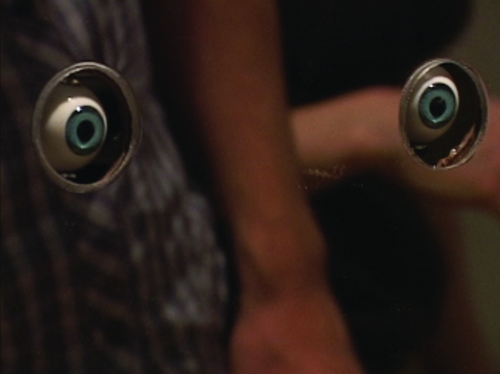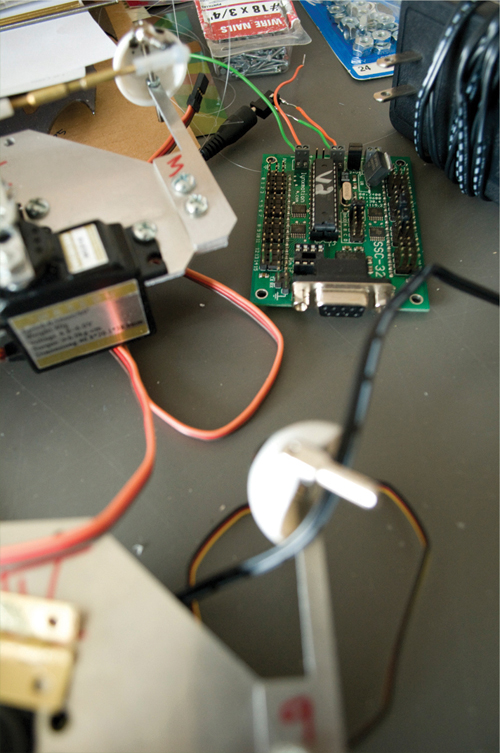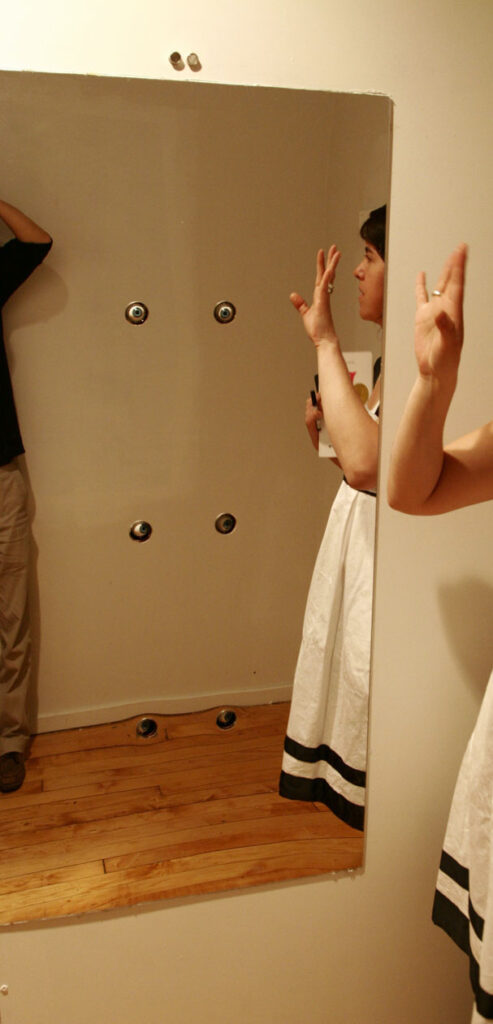
[Plexiglass, aluminum, plastic eyeballs, microcontollers, batteries]
Going back to Medusa’s paralyzing effect, the eye that judges plays a determinant role in this reciprocal relation of vision. This ocular conscience lives inside all of us, completely silent but aware in integrated individuals, omnipresent as Ayers points out in the case of some fractured others.
“On both a collective, archetypal level and an individual, developmental one, shame manifests itself most through the eye. It is mediated and conveyed by the idea of vision, and cannot arise without this perceptual element. In shame, we meet eyes and avoid eyes; the solitary, scrutinizing eye of our inner selves or the collective eyes of the world that will bear witness to our state of self-worthlessness, impotence, undesirability, ugliness, incompetence, filth or damage (Ayers, M., 2003).”
Eye Wall was born from the attempt of explaining to others the uncomfortable experience of being terribly aware of the other’s gaze. What seems a manipulative act of forcing the viewer to become vulnerable, the intention of my work will always be based on the idea of bridging, of explaining and bringing to light hidden processes that take place when interpersonal dynamics occur.
Originally this was a project conceived monumentally: a hundred pair of eyes were intended to be installed in both sides of a corridor. The participant had to go through the passage to experience this moving texture of plastic eyes in different heights that followed one through it. The multiplying effect of mechanical eyes had one single point of obsessive interest creating an unpleasant encounter with self-awareness. More a prototype than a final piece, Eye Wall was a learning process into metal laser cutting, microcontollers, electrical power and physical computing.





Special Thanks to Lucas Roy for the documentation.